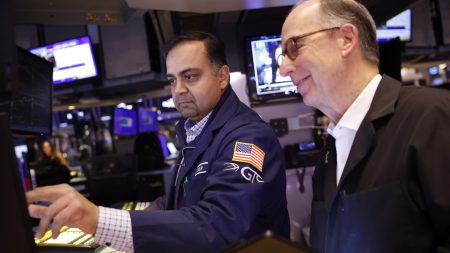Tony Roth, CIO of Wilmington Trust Investment Advisors, Inc., discusses the economic implications of the increasing longevity of the American population. With the projected increase in the population aged 65 and older from 58 million in 2022 to an estimated 82 million by 2050, there are challenges ahead for continued economic growth. However, Roth believes that the U.S. is uniquely positioned to overcome these challenges and capitalize on the economic opportunities associated with longevity.
A key aspect of this discussion is the declining birth rate in the U.S., which, in combination with the aging population, is reshaping the age distribution of the workforce. As older workers continue to be significant drivers of economic dynamism, it is important to consider the potential implications for the labor market and the broader economy. Despite headlines about younger individuals wanting to retire early, the reality is that older workers are likely to continue working, contributing to the economy and societal changes.
The U.S. workforce aging offers distinct advantages by influencing the dependency ratio, which traditionally poses challenges for economies. Unlike other countries with higher dependency ratios resulting in reduced productivity growth, the U.S. benefits from an aging workforce that can positively impact the economy. Workers staying in the workforce longer can contribute more to the economy, benefiting their financial well-being and that of younger workers through mentorship and training opportunities.
To support older workers in an aging society, adaptability and flexibility in the labor market are key success factors. The U.S. is recognized for its labor flexibility, enabling workers to switch jobs and companies to restructure their workforces as needed. Advancements in technology, particularly AI, can help reshape the narrative of an aging workforce by enhancing productivity and complementing the skills of human workers. AI can benefit older workers by enabling them to upskill and make meaningful contributions to their jobs and the economy.
As individuals prepare for longer careers, investing in health, relationships, and finances early on is essential. The concept of longevity literacy, which involves investing in oneself for a fulfilling future, becomes crucial as life expectancies increase. By reshaping one’s mindset to view each additional year as an asset rather than a burden, individuals can prepare for a future where longevity drives economic growth and prosperity. Embracing changing dynamics and adapting to longer careers can ensure a future where economic growth is catalyzed by longevity.
Overall, as the U.S. prepares for a significant demographic shift towards an aging population, there are both challenges and unprecedented opportunities on the horizon. Navigating these changes and embracing the economic implications of longevity can lead to a future of growth and prosperity. It is important to seek professional advice and consider individual circumstances when making financial decisions in light of these demographic shifts.















